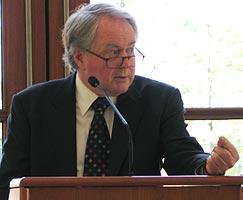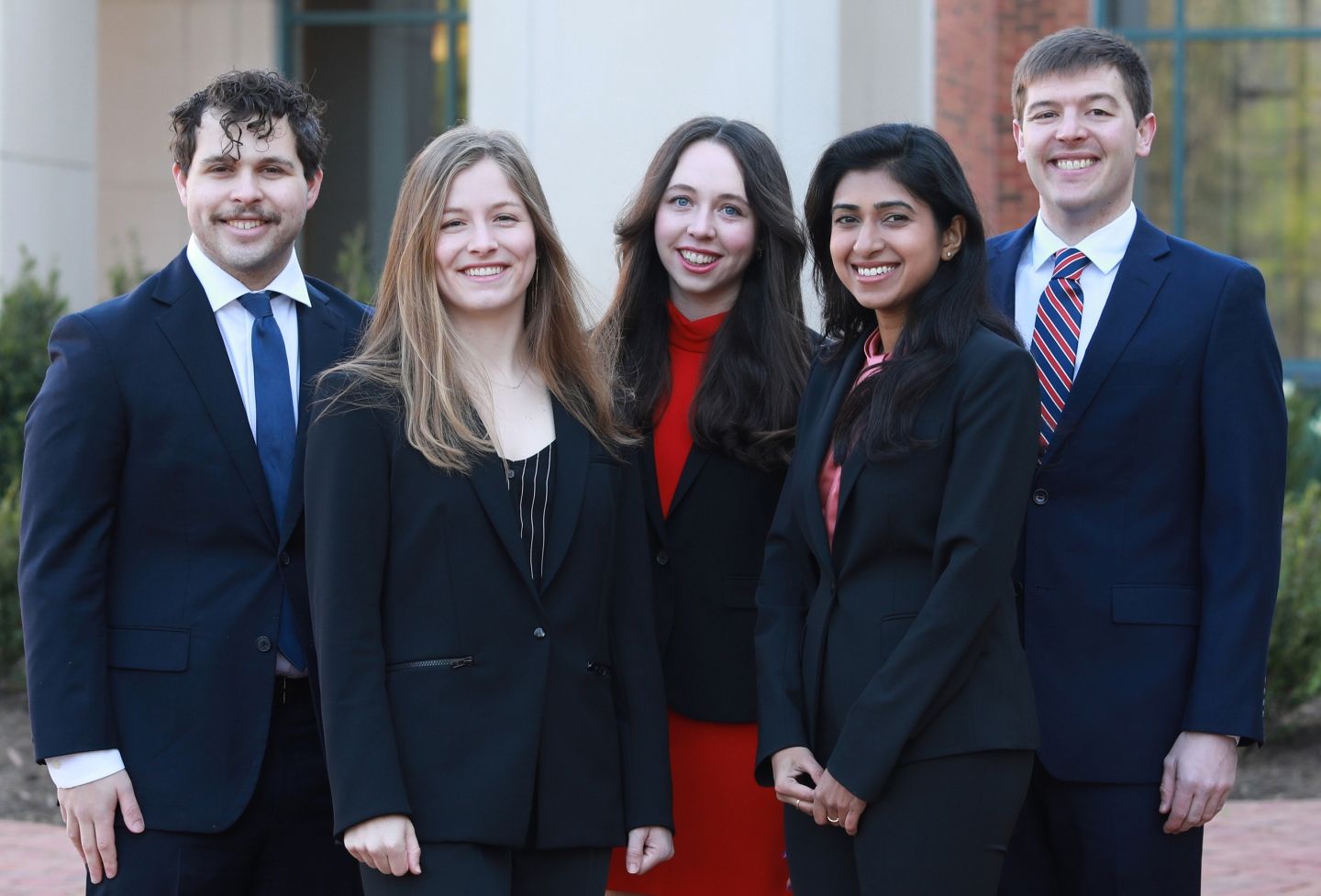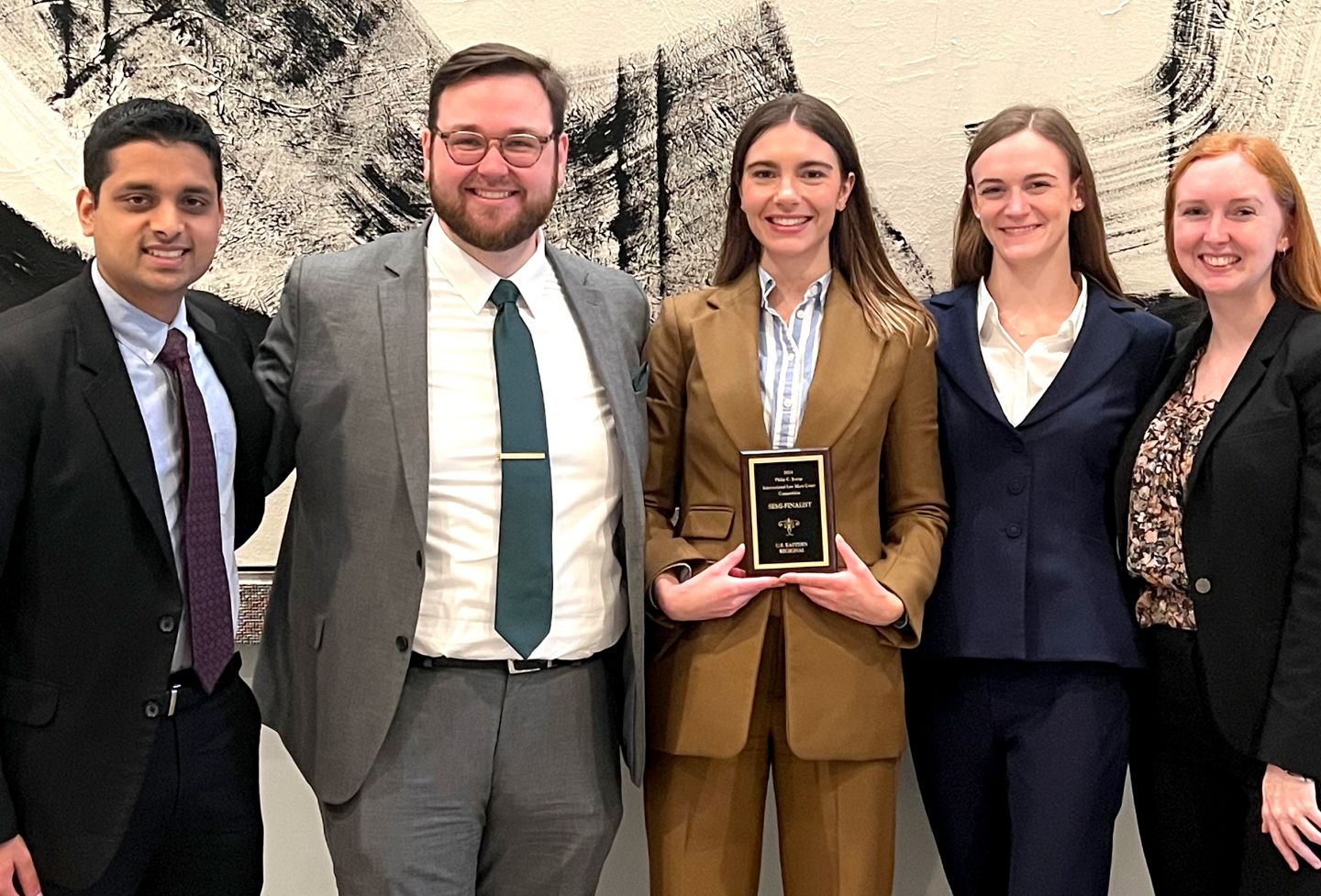Role of International Law in American Courts Unclear, Fletcher Says

Sosa v. Alvarez-Machain is the most comprehensive attempt yet to explain the role of international law in U.S. courts, but the issue remains clouded with uncertainty, said William B. Fletcher, a judge on the Ninth U.S. Circuit Court of Appeals, at the Ola B. Smith Lecture April 20.
“This is a multifarious, difficult, nuanced topic that even the sophisticated writers in the field…don’t fully break down into the constituent parts that are necessary for a full understanding or even for an understanding of what might be out there for future development,” said Fletcher during his lecture, sponsored by the Student Legal Forum and the Virginia Law Review. “I think the Sosa decision is as ambitious as we are likely to get.”
Although the 2004 case serves as a contemporary example of the issue, the relationship between international and U.S. law extends back more than 200 years to the first Congress, Fletcher said. In September 1789, with the establishment of a working federal judiciary, district courts received jurisdiction over cases described in the Alien Tort Statute.
Under this statute, federal district courts had cognizance over all civil lawsuits in which an alien sues over violations of either the law of nations or a U.S. treaty. “[This statute] authorized jurisdiction in the district courts rather than the circuit courts,” Fletcher explained. “It authorized jurisdiction without an amount in controversy requirement,” (a minimum amount sued for) unlike most requirements in cases involving parties from different states during that time period.
The U.S. treaty provision “was quite problematic,” according to Fletcher. Indeed, he noted that there was almost no reported litigation under the statute in the early years of its existence.
“One of the reasons, I think, is that there’s a paucity of reported litigation … during that early period,” he said. “There were [also] other statues that were available for certain litigation…but whatever the complex set of reasons, the statute essentially disappeared.”
After almost 200 years, the statute reappeared in a 1980 case alleging a violation of the law of nations: the family of a Paraguayan man tortured in Paraguay found his torturer in the United States, and won a lawsuit against him in American courts. The ruling in the case held that “international law was federal law both in the jurisdiction-conferring sense…and also in the Supremacy Clause sense,” he said. “It’s simply federal law.”
The case sparked a series of similar lawsuits in which plaintiffs filed claims under the Alien Tort Statute in combination with human rights guarantees under international law. In some cases judges declared that the law was muddled and called for clarification by the Supreme Court.
It was only in a 1997 Harvard Law Review article published by two professors who were U.Va. law faculty that a better definition of the statute came along, said Fletcher. Professors Curt Bradley and Jack Goldsmith contested the judge's conclusion in the 1980 case; they argued that “it was inconceivable” that international law would be considered federal law.
“To read that statute as authorizing suits based on federal law is a profoundly anachronistic reading,” the professors wrote.
The case of Sosa v. Alvarez-Machain, in which a Mexican national charged with torturing a Mexican DEA agent was kidnapped and delivered to the United States for trial, brought the issue of jurisdiction under the Alien Tort Statute to the forefront. There is no jurisdiction under the statute for such crimes as torture and slavery, Fletcher said.
“The government also argued that even if there were jurisdiction, the norm of international law was not sufficiently established in this case to provide a cause of action,” Fletcher said. “Particularly after the publication of the Bradley/Goldsmith article had been thrown into [the] question, the Supreme Court says…international law is federal law, at least in some narrow circumstances, in both the jurisdiction…sense and in the Supremacy Clause.”
The Supreme Court unanimously ruled that the Alien Tort Statute was intended only to give courts jurisdiction over traditional law of nations cases—those involving ambassadors, for example, or piracy. Alvarez-Machain's claim did not fall into such a traditional category.
In analyzing lessons that could be drawn from the Supreme Court ruling on Sosa, Fletcher pointed to Justice David Souter’s opinion that “norms must be established with comparable clarity.”
Fletcher said it was unclear what situations might call for a pre-emptive enforcement of the federal common law. He outlined three possible “paradigm cases” under which federal common law could be used: an alien bringing suit against an alien in another country; an alien bringing suit against a U.S. corporation for actions abroad; and the U.S. government bringing suit against something that violates the norm of human rights within the United States.
Even though “the only sustained series of [the latter] cases are death penalty cases,” Fletcher doesn’t think Sosa will lead to an invalidation of the death penalty anytime soon. “It will not happen,” he said. “There will be no international norm.
“The only thing I can say that might be slightly discouraging is [that] I think this is only the beginning of the complication,” he concluded.
Founded in 1819, the University of Virginia School of Law is the second-oldest continuously operating law school in the nation. Consistently ranked among the top law schools, Virginia is a world-renowned training ground for distinguished lawyers and public servants, instilling in them a commitment to leadership, integrity and community service.


